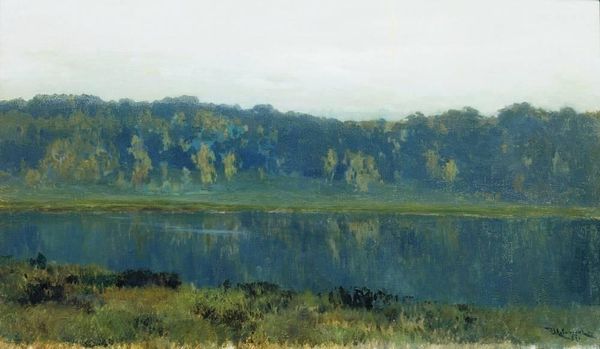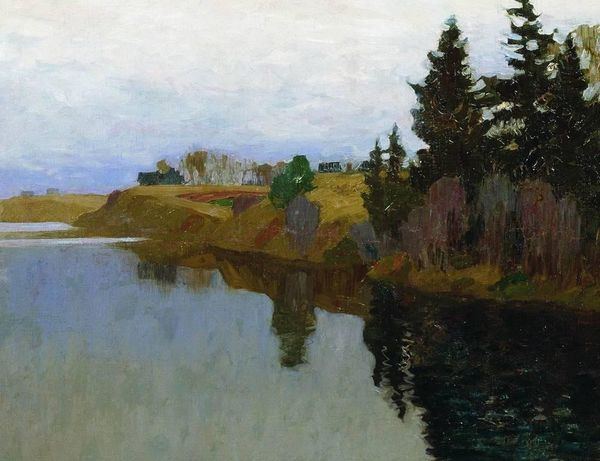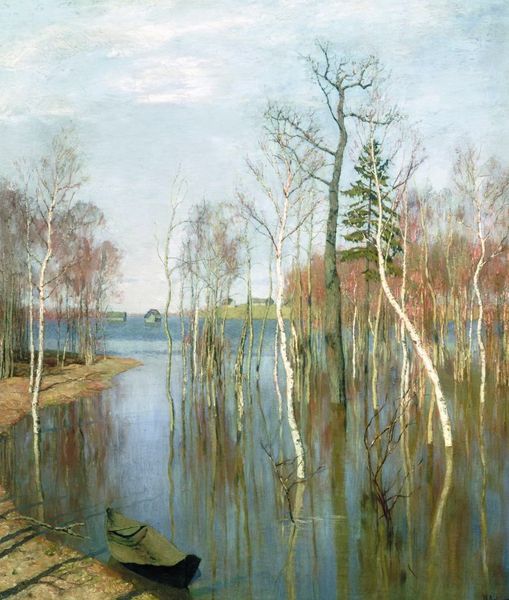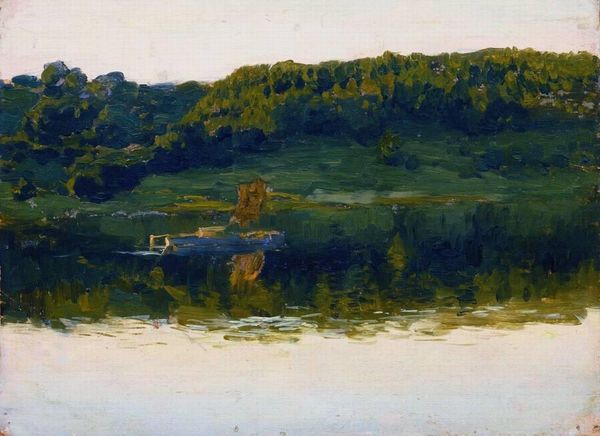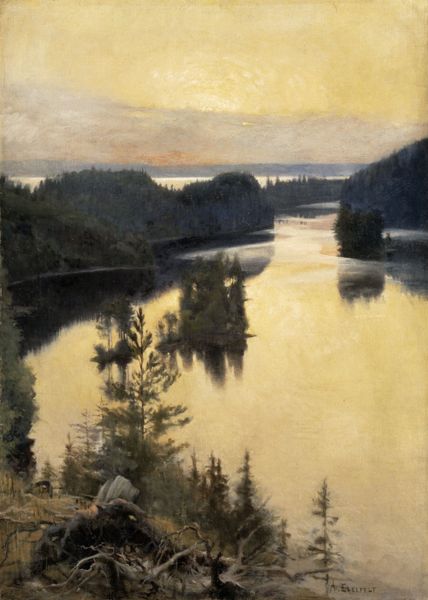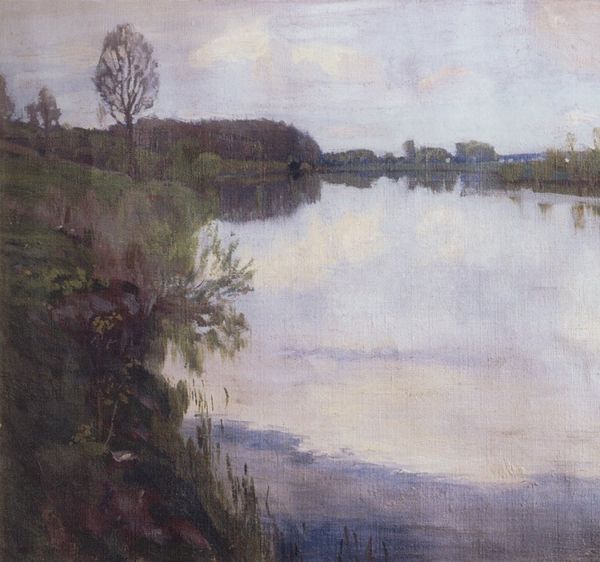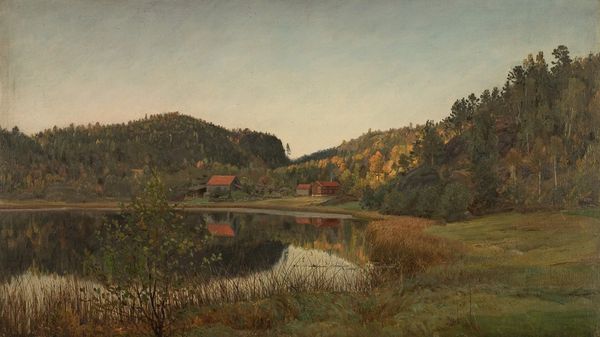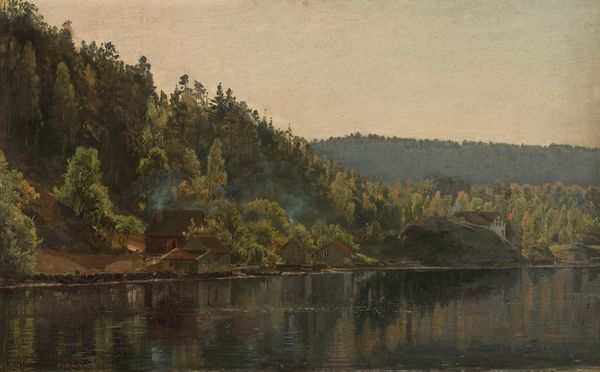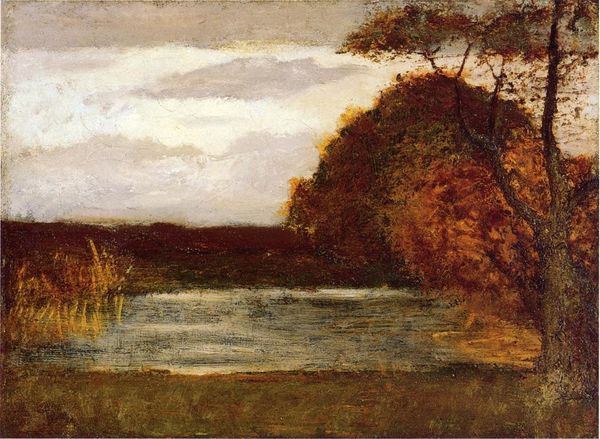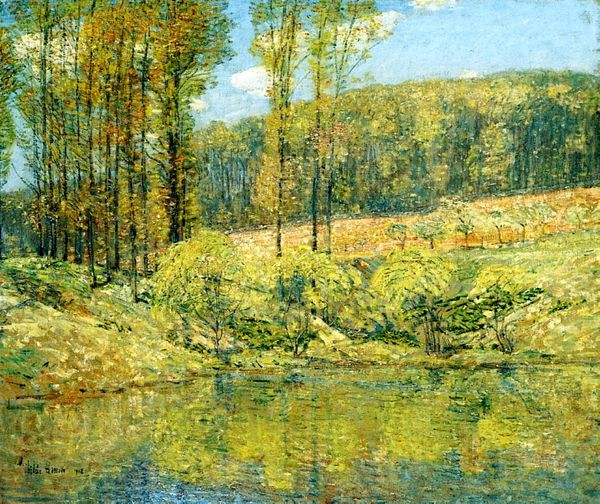
Copyright: Public domain
Isaac Levitan painted this evocative landscape of a forest lake in Russia towards the end of the 19th century. It's a scene of tranquil beauty, but we can also see how it speaks to the social conditions of its time. In late 19th-century Russia, landscape painting became a powerful vehicle for expressing national identity. Artists like Levitan turned away from Western European styles, seeking instead to capture the unique character of the Russian countryside. This was a time of growing nationalist sentiment, and art institutions like the Society for Traveling Art Exhibitions played a key role in promoting a distinctly Russian artistic vision, often in opposition to the tastes of the Imperial court. Levitan's choice of subject, a remote and unspoiled lake, reflects a yearning for an authentic, pre-industrial Russia. It invites reflection on the relationship between humanity and nature, and perhaps even a subtle critique of the social changes then sweeping through the country. To understand this work more fully, we can explore the archives of art societies, the writings of contemporary critics, and the broader history of Russian nationalism. It is these sources that enable us to reveal art's profound connection to its social and institutional context.
Comments
No comments
Be the first to comment and join the conversation on the ultimate creative platform.
